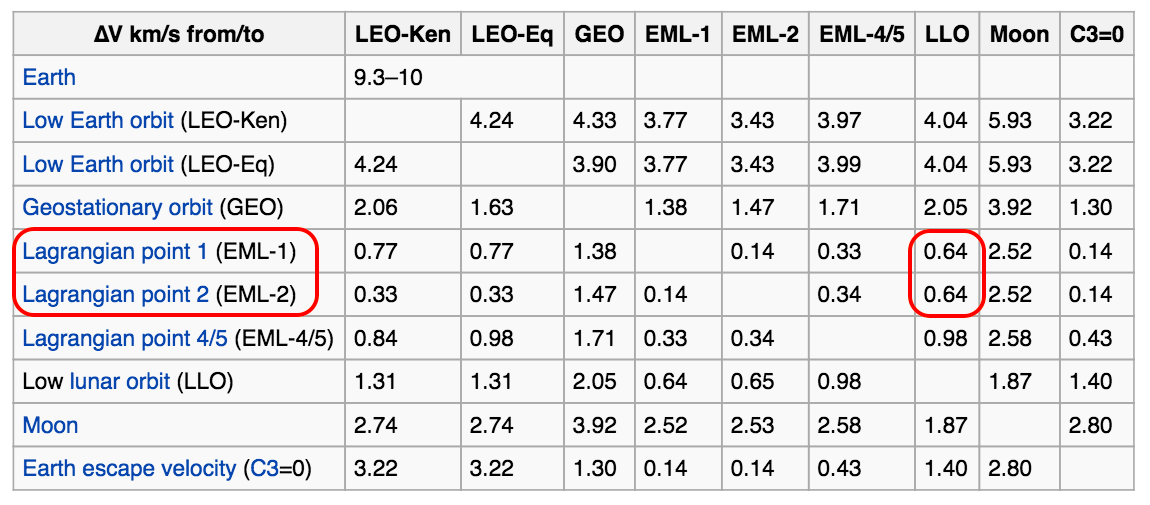Wikipedia gives 0.64 or 0.65 km/s for going from LLO to EML-1 or back. I would like to know what the delta v of the specific burns involved are, and if my initial calculations are close, I don't see how their number can be correct.
Here is Wikipedia article about delta-v budget.
It's complicated because it's a full 3-body problem, so I'm left trying to approximate it with a simplified model in the Moon's sphere of influence. LLO I have taken to be at 110 km, at 1.629 km/s. I have 61,000 km for the distance from the Moon to the EML-1 (from the approximation $R \cdot \sqrt{\frac{m_1}{3 \cdot m_2}}$).
First burn, I consider getting into an orbit with apogee at 61,000 km, which is at the radius of EML-1. Perigee for the elliptical orbit would be 2.27 km/s, with the difference from LLO being 0.641 km/s, which is our first burn.
NOTE: the numbers here are wrong staring with 0.714 km/s; see my answer for details.
Second burn, I calculate the speed at apogee of that elliptical orbit to be 0.068. However, EML-1 is circling around the Moon, which I would calculate by:
$$\frac{2 \cdot \pi \cdot R}{30 \cdot 24 \cdot 60^{2}}$$
if R is the 61,000 km distance from the Moon. This gives 0.714 km/s. If the orbit is going in the "right" direction, then I subtract the apogee speed from this to get 0.641 km/s for the second burn.
If you added these, it's 1.355 km/s total, and both burns are of about equal magnitude. I don't think that's right. These calculations are probably correct for the equations I'm using, but I strongly suspect that the underlying assumptions are highly flawed. Perhaps Earth's gravity has a major effect in the mechanics? In other cases, the EML-1 and EML-2 points are touted as extremely low delta v points to reach, but these numbers would seem to somewhat undermine that, if the 0.641 km/s burn is going "out of the way". But I'm not sure.
Does anyone have any serious numbers for the transfer from LLO to EML-1?


